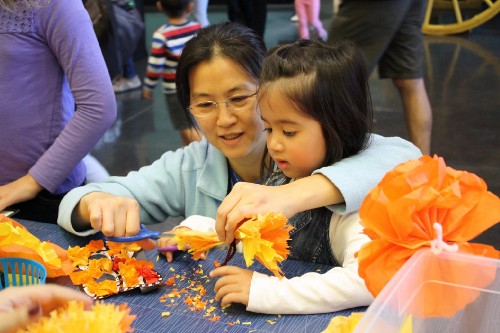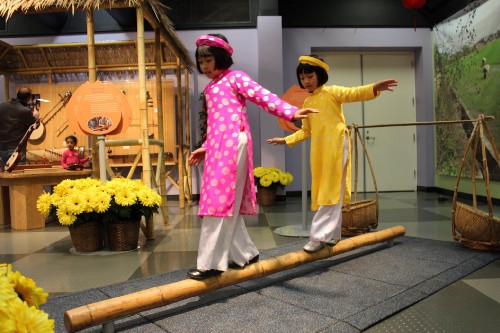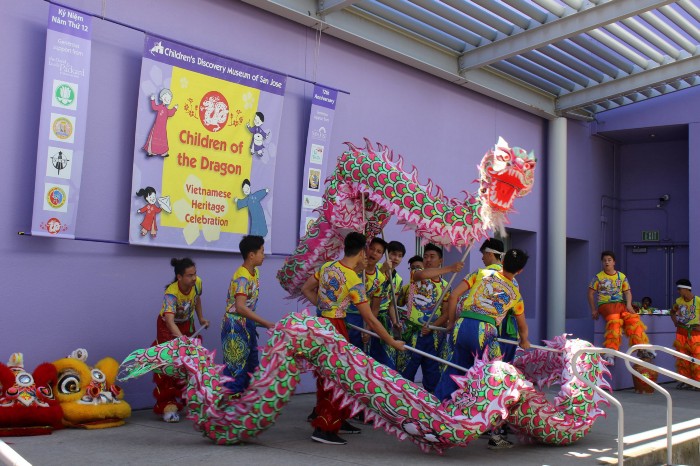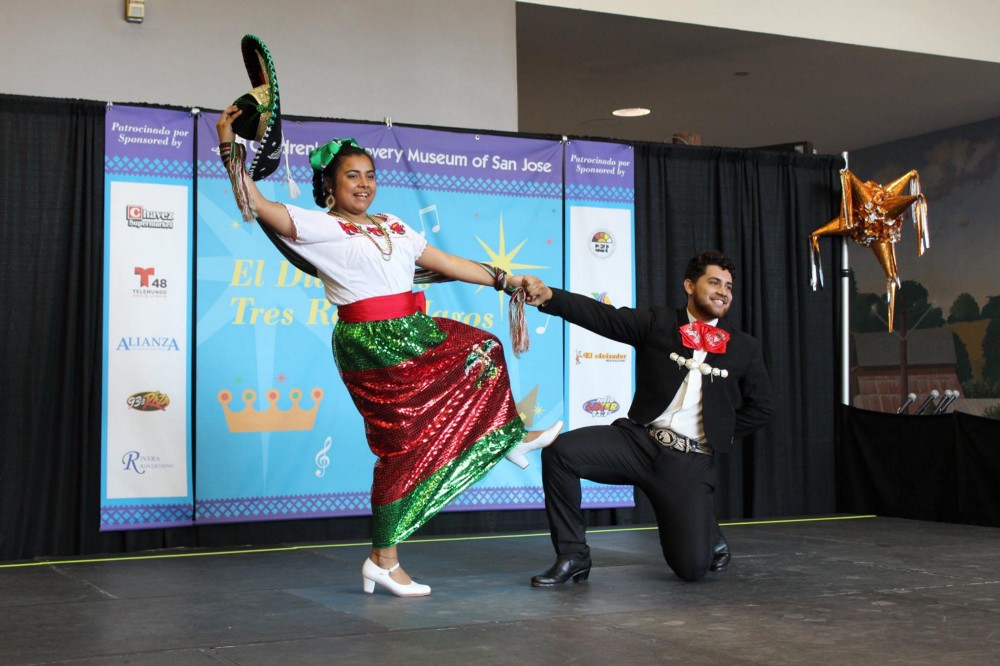A Folklórico performance at the Museum’s annual El Día de los Tres Reyes Magos / Three Kings program.
Why we should teach our children about festivals from all cultures
By Anjali Shastry
Every year, we host a Cultural Celebration Series that introduces our young visitors to holidays from many backgrounds — especially ones that they may not celebrate themselves at home. Some of our celebrated holidays include Hanukkah, Diwali, and Día de los Muertos / Day of the Dead.
We like to represent cultures and celebrate the rich diversity of San Jose and the larger Bay Area, but it’s about more than that. In addition to allowing children of all backgrounds to feel seen and appreciated by their local children’s museum, our event series is about introducing holidays and customs to kids who haven’t yet experienced them.
But why is it so important for little ones to experience new holidays?

A mother and daughter making paper marigolds at the Museum’s Día de los Muertos / Day of the Dead celebration.
We identify our similarities.
Even if the specifics of each holiday across the world are different, we can find core similarities that span celebrations the world over. No matter where you live, your background, or your religion, it is universal that holidays are a time for families to come together, enjoy good food, talk about a culture’s history and lore, share traditions, and create new memories.

Exploring Vietnam in our original Voyage to Vietnam traveling exhibit.
We want to celebrate our differences.
What are the holidays that your family celebrates that your friends’ families don’t celebrate? Do you have memories of celebrating those holidays with them? Exploring the things that make different holidays and customs unique is a great way to understand the world and the people we love.
In addition to celebrating holidays that your family may not, people in different countries and cultures can celebrate the same holidays in different ways. For example, in Italy, Santa Claus is not a major part of how people celebrate Christmas. At the Museum, we celebrate Lunar New Year in the Vietnamese and Chinese traditions, but those are not the only two countries that observe Lunar New Year. There are unique traditions in Korea, Laos, Singapore, and Japan. We also host an El Día de los Tres Reyes Magos (or Three Kings Celebration), which is observed in many Spanish-speaking countries in the world — but we modeled our event after customs in Latin American countries.
By learning about new holidays and the ways our familiar holidays are different in other countries, we get to explore the world and learn what is important to people!

Lion Dancers break out the dragon for some fun at a Children of the Dragon performance.
We develop empathy.
As we learn that the core of holidays for many families is coming together and honoring traditions, we learn that we are not so different from each other. This helps young children understand others and develop empathy.
At the Museum, we like to try foods and sweets that are traditional for the holiday we are celebrating, and we watch performances and dances and listen to music that honors the holiday. Children can participate in hands-on activities that allow them to experience the joys of unique customs, like making tortillas and making a Three Kings crown to wear.
It’s important to come together and unite around something bigger than ourselves — to appreciate and understand our friends, neighbors, and the community. Children love asking questions and learning more, and embracing diversity at an early age will open their minds and make them open and welcoming to new ideas.
Let’s keep the learning going at home!
There are so many great ways to introduce little ones to new holidays at home. Reading books, watching movies, going to cultural events or participating in virtual celebrations, and trying new foods are ways to explore new cultures together. Let’s encourage diversity and cultural understanding from the very beginning and help kids develop well-rounded views of their local communities.

